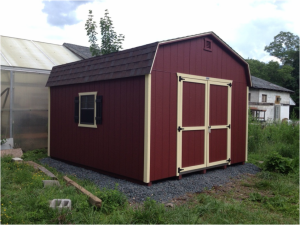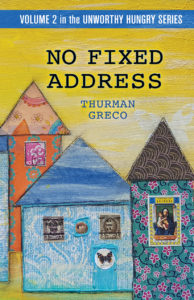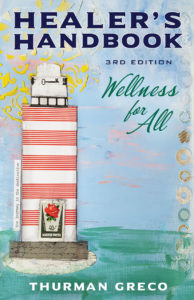Summertime
“What’s happened?” she asked with concern in her voice.
“What do you mean? ” I replied.
“What happened to the people?”
“Oh, that. Well, it’s summer.”
What’s happened is that the faces are often different in the pantry in the summer. When you’re living on the edge, when you’re a member of the Struggling Class, the change of seasons counts for a lot.
People who were too sick to make it to the pantry in cold are now able to make it out. How they manage to make it through the winter is a question for me. These shoppers barely get enough to eat as it is. How do they eat over the winter? Humans are not bears and don’t hibernate. What do these disabled do to survive?
And, yet, we have many in this category.
Some can’t make it to the pantry in the winter because their vehicles aren’t winter worthy. Beyond a certain temperature, the cars just don’t work. Then, as spring rolls around, they manage to get them running again to drive to the pantry during the warmer months.
Making it to the pantry in the winter is really difficult for the homeless. Truthfully, I don’t know how some of these homeless live in the winter. How they keep from freezing to death seems to me to be a miracle.
We lose some shoppers also. In the winter, men visit the pantry regularly because they don’t have work. Then, as the weather gets warmer, they find jobs and can’t come to the pantry because they’re working when the pantry is open.
We always miss these guys because they are good volunteers and really make a contribution to the pantry during the cold months.
One staple which carries everyone through challenges is peanut butter. Peanut butter is important to everyone in the Struggling Class.
It is important because it:
can be eaten right out of the jar.
needs no refrigeration.
has a long shelf life.
is not necessary to have teeth in order to eat it.
does not have to be combined with another food in order to be palatable.
is nutritious.
does not usually come in a container requiring a can opener.
is not necessary to cook it.
The only hitch to this whole wonderful story about peanut butter is that most of the time, there is no peanut butter in the food pantry.
The only time we are able to get peanut butter in our pantry is when we are having a peanut butter drive. It’s been months since we’ve had a decent amount, or any amount, of peanut butter.
Can you help?
There are 2 ways you can come to our rescue:
Our pantry is open Mondays from 2 to 4 in the afternoon. I’m usually there by 10:00 am.
On Tuesday mornings from 9:00 to 10:00 we are in the pantry packing the take out bags.
If you live/work in the area and want to bring some peanut butter to the pantry, we’re happy to receive it then.
If dropping the peanut butter off at the pantry is not convenient, we’ll be happy to accept your donation and purchase the peanut butter for the pantry. Please send the check to: Reservoir Food Pantry, P.O.Box 245, Boiceville, NY 12412.
We thank you in advance for this generosity. Currently, we serve over 150 households each week. Everyone needs peanut butter.
Peace and food for all.
Thurman Greco
Thank you for reading this blog post.
Please share this article with your preferred social media network.
Don’t forget to join the email list.
Grocery shopping is always a problem for the elderly.
I first met her outside the shed at the Reservoir Food Pantry. A recent widow, I heard her comment “I just never knew how hard it was going to be as a widow.” Her husband died just over a year ago and she’s still making her way toward accepting her new reality.
“I never knew it would be so difficult…being alone like this. I’ll never tell my children I come here. I don’t want them to know.”
As she spoke, she wiped an occasional tear while moving through the pantry line with a group of women, all about her own age. They were choosing corn and apples, squashes, greens, onions, potatoes. As the line snaked forward, she turned her attention to the canned goods: beans, soup, fruits, veggies.
Pat hasn’t made it to the food stamp office in Kingston. For one thing, it’s a good half hour down Route 28. For another, she’s afraid:
of the forms,
the humiliation of being unable to survive on her own,
the long wait in a building she may not even be able to find,
finally, she’s afraid of the whole process which she finds frightening.
Her financial situation isn’t so far from all the other older women in the pantry line. Grocery shopping for the elderly is difficult under the best of circumstances. Getting to the grocery store can be challenging for older people – getting around in the parking lot and going up and down the grocery store aisles is no fun anymore. And, then, when they can’t find what they need, they have to maneuver the muddy parking area and the scary entrance ramp at the pantry. And…we haven’t even discussed the packages yet. They’ve got to be gotten home and in the house (wherever and whatever that is).
Finally, getting high quality, affordable food is more and more difficult as the days go by. And, as difficult as it is for Pat, she’s one of the lucky ones. She’s got a working automobile.
Combine the lack of a working automobile, bad weather, not enough $$$ and you’ve got the makings of a disaster for a senior.
I keep telling everyone who’ll listen that seniors should get their SNAP card, a list of nearby pantries, and their first social security check at the same time. So far, nobody has listened. Of course not. Why should they? We’ve all got gray hair.
Seniors struggle with the big 3:
food
housing
medical expenses.
Forget the extras like clothing. As seniors, we get less, pay more, and go without. When I need something new to wear, I go to the boutique of my closet.
Healthcare costs can be devastating, even to a senior with medicare. Once a person comes down with cancer or other expensive disease, the pocketbook empties pretty fast.
There is real pressure to feed the rising tide of hungry people at every pantry. We get questionnaires periodically from different agencies wanting to know how often we run out of food. How does “weekly” sound?
The Big 3 for pantries include:
high unemployment
widespread poverty
deep cuts in social spending programs.
Pantries, for the most part, are
arbitrary,
subjective,
strongly biased
when it comes to deciding who can and cannot receive food. There are simply too many agencies with too many people standing in line for too little food for any food bank or state office to properly oversee and supervise the selection process.
As far as feeding the hungry, we’re not even coming close to filling the need created by the widespread poverty and deep spending cuts. People in food pantry lines are, in a severe winter, choosing between eating and heating.
Our pantry, housed in a shed, an old green house, and the back of a restaurant is a ragtag emergency food movement which is in reality not emergency at all.
Lines and crowds outside our pantry on Monday afternoons can easily convince any onlooker that the good old U S of A has a food problem.
http://www.reservoirfoodpantry.org
Thank you for reading this blog/book.
Please send a comment.
Please share this article with your preferred social media network.
Don’t forget to join the email list.
Peace and food for all.
Thurman
Why I work in a pantry…even after all these years.

“This is perfect weather for a flood” she said casually. “It’s good to see the county out cleaning the ditches by the roads. We need to be ready.”
As I write this post, my mind travels back in time to the 1st pantry day after both Hurricane Irene and Super Storm Sandy. I managed a pantry in Woodstock, NY then. What pantry days they were! People came in looking for anything and everything they could find. They were upset, scared, coping with loss. Many had lost everything – car, house, job. They didn’t know where to turn.
Sadly, neither did I. As they filed in the pantry room, they asked questions that I couldn’t answer. So…I referred them to Family of Woodstock down the street. I simply didn’t know what else to do.
So, now I fast forward to the present where I manage a pantry in Boiceville, NY. Residents here are still recovering from Irene and Sandy. At this pantry, I see some of the same people I saw in Woodstock. Recovery is slow.
Reservoir Food Pantry volunteers work to assure that quality food is available for the many individuals and families in Ulster County. They struggle with food insecurity, homelessness, and underemployment. About 40% of our clients are transportation challenged and we deliver food to them.
Hunger comes in several categories in our area:
elderly poor
employed poor
ill poor
infant poor
generational poor
persistent poor
resource poor
situational poor
struggling poor
Regularly, without even a second thought, volunteers at our pantry located in the Ashokan Reservoir area of Upstate New York, work hand-in-glove with UlsterCorp volunteers, Rondout Valley Growers’ Association. Together, they make an an ongoing effort to provide enough food for those struggling daily with hunger.
Now, in 2015, area pantries are working to be a cohesive group with food storage and safety procedures known by everyone. We know, even if no one else does, how much the area hungry and homeless need the food. Hunger alleviation cannot be effectively carried out in a vacuum.
Our success depends on long term commitment and collaboration. We need to be able to escalate services when needed. Volunteers in our group are here for the time and effort necessary to fight hunger and homelessness in our area.
www.ulstercorps.org
www.familyofwoodstockinc.org
www.goodmorningwoodstock.com
Thank you for reading this blog.
Please refer this article to your preferred social media network.
I hope you found this helpful. Please leave your comments below and check out our other posts.
Don’t forget to join the email list.
Peace and food for all.
Thurman Greco
“Are you closing?”
 The call came out of the blue. A pantry management person I never, ever hear from called: “Are you closing your pantry? I heard this and I’m not the kind of person to spread gossip, so I’m asking you personally.”
The call came out of the blue. A pantry management person I never, ever hear from called: “Are you closing your pantry? I heard this and I’m not the kind of person to spread gossip, so I’m asking you personally.”
“No. No, the Reservoir Food Pantry is not planning to close” I replied. Actually, I’ve been having people call me for almost a year asking if we’re closing. I always ask everyone who approaches me: ” Who did you hear this from?”
“I don’t remember, Thurman.”
“Well, I sure wish I could get someone to spill the beans because I’d love to call that person up and find out what started this whole rumor.”
If I’ve had this conversation once, I’ve had it a dozen times over the past few months. So, here for all the world to read, is the bald truth. The Reservoir Food Pantry is not closing. Actually, we’re growing like a weed.
Every Monday morning Prasida and Francine go to Latham and return with all the produce they can haul back in our long line van. They, Bob Overton, Garrett O’Dell, and Susanne Traub put it out on tables and serve it to the shoppers. By 4:00, there is usually none left. Fruits, vegetables, pies, cakes, meat, fish, yogurt, eggs, …it’s all gone.
We serve about 100 families every Monday afternoon at 2:00. On Tuesdays and Fridays we deliver food to another approximate 50 home bound households.
We have an annual mailing in which we ask the community to support us financially in our efforts.
We are at the entrances of the Kingston Walmart one weekend every month asking shoppers to help us feed the hungry.
Every other month we are at the entrance to the Boiceville IGA on a Saturday as well.
We recently opened a Capital Building account at the bank.
We are actively involved in disaster preparation activities.
The volunteers of the Reservoir Food Pantry are a group of committed individuals focused on feeding the hungry as a way of celebrating the amazing abundance which is available in our country. Only in the good old U S of A could there be this much food available…just for bringing to pantries.
We are:
your tax dollars at work.
an environmental effort as we intercept food bound for the landfill and bring it to the pantry for distribution.
working together to feed the hungry.
looking for a larger space that is located above the flood plain.
extremely grateful for the opportunity we have to feed the hungry in the Ashokan Reservoir area.
It is an honor and a pleasure for us to be in Boiceville in the little red shed behind Robert’s Auction.
Thanks for reading this blog.
Please refer this article to your preferred social media network.
I hope you found this article helpful. Please leave your comments below and check out other blog posts.
www.reflexologyforthespirit.com
www.goodmorningwoodstock.com
www.sugarsecurity.com
my.Benefits.ny.gov
Don’t forget to join the email list.
Peace and food for all.
Thurman Greco








